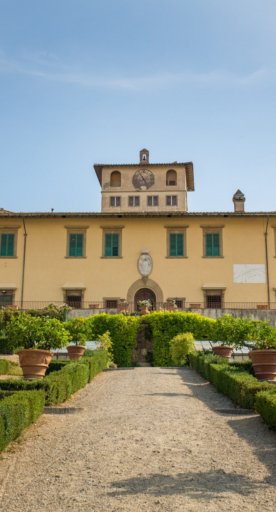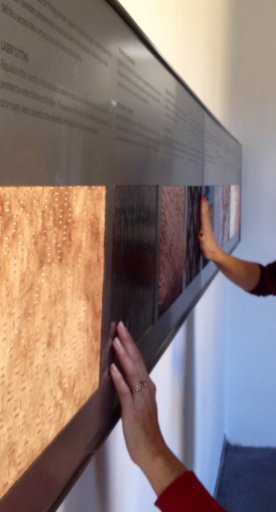What to see in the historic centre of Figline Valdarno
A way to discover the heart of the town
“But then the citizens, now mixed with Campi, with the Certaldo, and with the Figline, were pure down to the humblest artisan.”
And so wrote Dante Alighieri in the Canto XVI of Paradise, the third part of his Divine Comedy, mentioning, in a handful of verses, no fewer than three important Tuscan towns, one of which is Figline Valdarno.
In order to discover this town, we will take you on a visit of the buildings that encircle its central piazza and some other places in the historic center.
-
1.The Collegiate Church of Santa Maria
-
2.The Ex-Serristori Hospital
-
3.Monastery of Santa Croce delle Agostiniane
-
4.The Gothic Church of San Francesco
-
5.Casagrande dei Serristori
-
6.Teatro Garibaldi

The Collegiate Church of Santa Maria
The Collegiate Church of Santa Maria was given its name in 1493 by Pope Alexander VI Borgia, although it had been founded by the Florentines in 1257. Many interesting works of art are preserved inside: a panel painting of the Madonna and Child with Saints, dated to 1539 and attributed to an artist from Le Marche, Giovanni Andrea de Magistris; the 19th-century Chapel of the Santissimo Sacramento, with its 16th-century baptismal font; a partially-glazed, terracotta Saint Joseph by Andrea della Robbia.
In the same place, we also find the peaked panel painting of the Maestà by the so-called 'Maestro di Figline', depicting the Madonna Enthroned with Angels and, lower down, Saint Ludwig of Toulouse and Saint Elisabeth of Hungary. The composition of this painting takes inspiration from Giotto's Maestà, painted for the church of Ognissanti in Florence around 1310 and now housed in the Uffizi.
Next to the church, and accessible by a door at the end of the right-hand wall, you can visit the Museum of Sacred Art, which holds Domenico Ghirlandaio's Pair of Angelsfrom 1480. It also contains The Martyrdom of San Lorenzo, painted in 1590 by Ludovico Cardi, known as Il Cigoli. This painting was commissioned for the church by the confraternity dedicated to San Lorenzo in the Serristori hospital; acquired by the Medici in 1733; it then passed into the storages for Florentine galleries before returning to Figline.

The Ex-Serristori Hospital
Just outside the church, on the opposite side of the piazza, is a long 17th-century building with a portico on its ground floor. This was the first seat of the Serristori hospital, founded by Ser Ristoro Serristori. The lunettes in porticowere frescoed by Niccolò Lapiat the end of the 17th century.
Monastery of Santa Croce delle Agostiniane
Founded in 1542 on the site of a Vallombrosian Benedictine monastery, the Monastery of Santa Croce delle Agostiniane has a charming 18th-century interior. Look out for a 16th-century canvas painting of the Crucifixion on the right-hand altar.
The Gothic Church of San Francesco
In the adjacent piazza Stanislao Morelli we find the Gothic Church of San Francesco, which dates from at least 1229 and the remains of which present a wide black-and-white facade, a common feature in 14th-century Tuscan buildings. The sacristy is home to a Madonna and Child from around 1420-1430, painted in stucco by a student of Lorenzo Ghiberti.
Casagrande dei Serristori
We then come to the so-called Casagrande dei Serristori, a palatial complex formerly inhabited by Figline's ruling family, the Serristori, where they assembled a collection of artworks and antique furniture, which was organized by Castellucci in the 1920s and later dispersed.
You can visit the Palazzo's beautiful courtyard, which boasts a Renaissance double portico overlooking an Italian-style garden.
The city walls, built between 1356 and 1375, are highly visible to anyone taking a stroll around the medieval centre, especially from the side closest to the hills, where a garden has been cultivated with pine trees.
Teatro Garibaldi
Alongside the walls, at the Cassero, is the Teatro Garibaldi, built between 1868 and 1870 by the Figlinese architect Angelo Pierallini and decorated by Egisto Sarri. Go backstage and you’ll find the medieval walls. From here we turn right and quickly reach the monumental, Neoclassical cemetery of the Misericordia, a square composed of four domed chapels, one in each corner, connected by colonnades.
















































































